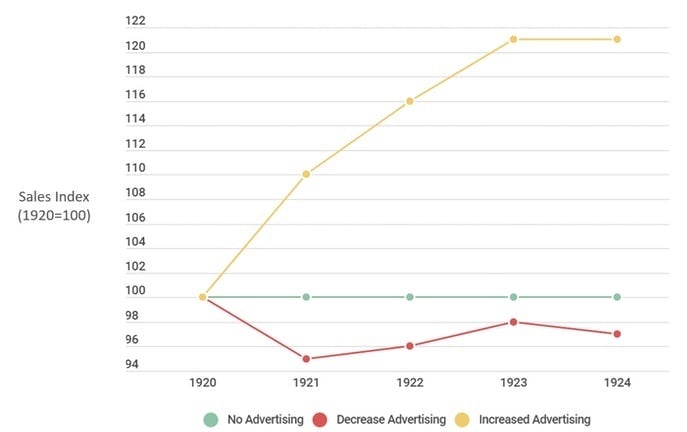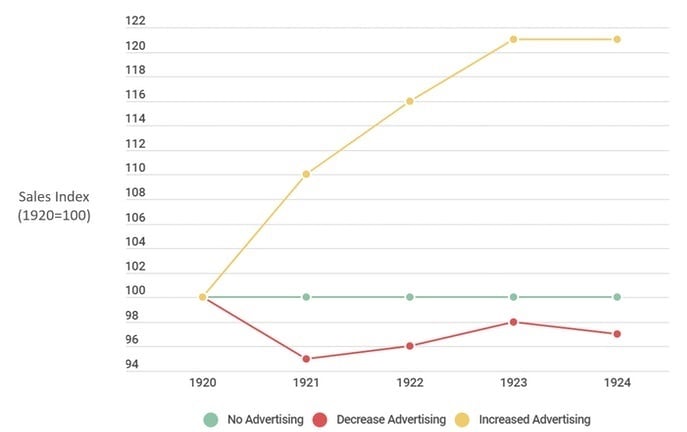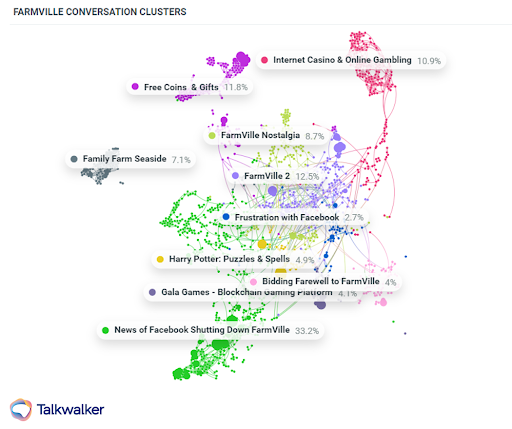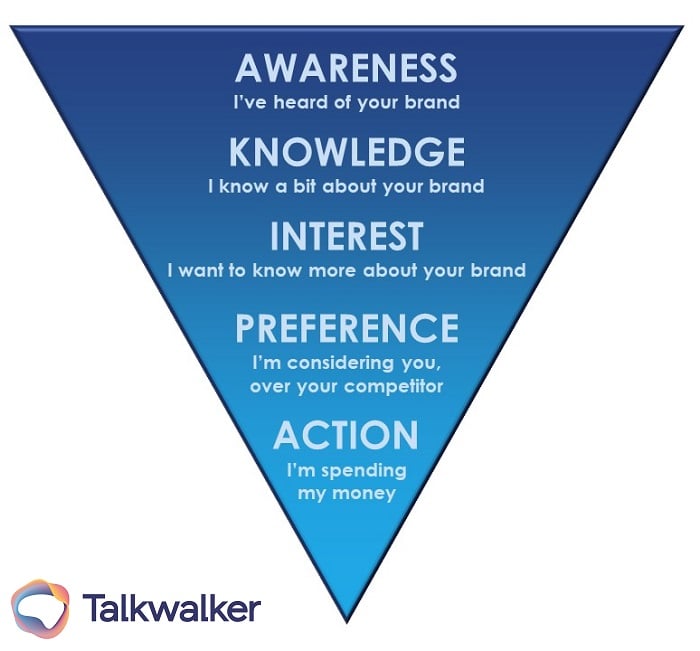Review your marketing techstack
Recession marketing ≠ budget cuts
It’s easy to see why brands think that marketing cuts are the way to go. It’s ingrained thinking. As soon as economic issues started to bubble up this year, conversations about marketing cuts rose.
Using Quick Search, to monitor trends from social media, blogs, news, and forum data, we discovered mentions of recession increased 563% from January to March 2020. Mentions of marketing budget cuts increased 380% over the same period.
It’s as if business owners jump to budget cuts not because they have to, but because it’s deep-rooted in their mindset.
The evidence not to do so is easy to find. A historic study analyzing the Great Depression in the Harvard Business Review, saw that companies that increased advertising spend during the recession increased market share both during the downturn and after. Those that cut budgets, saw declining sales for the following 3 years, performing worse than brands that didn’t normally advertise.
Image: Vaile, Roland S., “The Use of Advertising During Depression,”
Harvard Business Review, 5 April, 1927.
Personally, I worked with numerous SMBs through the Great Recession. Those that cut on marketing and advertising spend struggled to maintain their market share. Those that maintained, or increased spend, quickly overtook.
When the trend is to cut budgets, buck it. Be a big fish in a small pond, and take a bigger bite of your market.
The impossible task
Ok. This is pipe dream thinking. In reality, we all have accountability. People to answer to. Spend to justify. Targets to exceed.
If stakeholders expect cuts, you should cut.
So, you’re left with an impossible task. Cutting your overall budget, while still maintaining (or better still, increasing spend on advertising and marketing campaigns).
That means optimization. Making every single dollar work harder. Here're 6 elements to consider for 2021.
Prune your marketing tech stack
One of the biggest expenses in a marketing department comes from the marketing tech stack. According to Gartner’s Annual CMO Spend Survey 2019-2020, it takes 26% of the total market budget. That’s down on the previous year, but still the joint biggest expense alongside media.
Any cost you cut from here, can go directly towards consumer facing campaigns.
Why the tech stack? In a further Gartner report, Marketing Technology Survey 2019, according to marketers in the US and UK, 58% of their stack is being utilized to its full potential. That’s nearly half being wasted.
We don't want to cut for the sake of it, but when nearly half of your tech isn’t being used effectively, it’s time for a review.
Saying that, the reason behind this lack of use, is the development of some of the technologies. As platforms have grown, they’ve encapsulated other marketing elements, providing more use cases. If your team hasn’t kept ahead of those changes, there could be features within your tools that you’re not aware of. Or, are duplicating other platform roles.
Consider Talkwalker. Over the last year, the company has moved from social listening, to conversational intelligence, providing brands with the ability to integrate all types of external and internal data into one single source of truth. You no longer need one solution for social analytics, another to visualize your survey data, another to analyze data from customer calls and chatbots. Talkwalker is optimized to do it all.
Talkwalker is an example of how one platform can perform the functions of several. Helping you trim your martech stack. And therefore, costs.
Make use of the data you have
Speaking about unused resources, now is the time to look at your brand data. It’s known that 80% of brand data is untouched. And worse still, over 50% of executives think their business doesn’t treat data as an asset.
That’s powerful ammo sitting in your arsenal, that you’re not using.
How does that affect your marketing budgets? Ok, this isn’t a place where you can save money. Trimming data will not save you any costs.
But using it completely, wil make all your campaign efforts more effective. Get all your consumer data together, complete your consumer behavior picture, and you will:
- Create more impactful content that’s personalized to your audience.
- Target demographics more efficiently, with solutions that meet their pain points.
- Build a relatable brand that is aligned with the issues that your consumers care about.
- Develop a marketing funnel that is optimized for converting a greater number of people, even faster.
If you can do all that, using the resources you already have, that’s going to make a significant difference to your marketing goals in 2021.
Build relationships
One of the major trends Talkwalker predicts for 2021, is the importance of building conversations. Consumers are savvier than ever, especially Millennials and Generation Z. Intrusive advertising and marketing isn’t going to cut it any more.
Combine that with the drop in face-to-face connections due to pandemic restrictions, and we’ll see digital marketing increasing in importance for consumer touchpoints.
People have turned to social media for news, advice, entertainment, action, and you can take advantage of this traffic boom with minimal expenditure. Identify the conversations happening around your brand, across your industry, and even in society in general, then integrate your brand into those conversations (naturally, of course).
How?
It goes back to effective social listening. And using the data I mentioned above. Monitor your brand efficiently, and you’ll easily identify the conversations you should be a part of.
These Conversation Clusters show the flow of conversations around Farmville. As Zynga prepares to market the game’s latest sequel, these insights will help optimize their messaging for a more impactful campaign.
Increase lead generation
This ties in with the above. While you’re developing those conversations, increasing your positioning with clients, don’t lose your focus on lead gen.
After all, leads mean money.
Being part of your consumer conversations, the closeness you nurture with your customers, will help you to monitor buying signals, and the overall customer journey. Especially when combined with the data I mentioned earlier.
The AKIPA model helps you identify the conversations that are leading consumers from discovering your brand, to buying it.
Again, this isn’t an additional expense. Just a highly detailed process for strategizing and actioning your campaigns, to ensure they’re working effectively. Leading to better ROI.
It also helps you pinpoint where your campaigns spend should be focused. Look for bottlenecks in conversions, then focus your spend on fixing those problems.
Promote customer retention
Customer retention is critical during a recession. Acquiring new customers is expensive. 5 to 25 times more expensive than retaining existing ones. By engaging your existing customer base effectively, with relevant comms, you can increase profits without the expenditure.
Just 5% increase in retention can amount to 95% increase in profit.
This all aligns with what I’ve said above. Understanding your customer demands, by analyzing the data you have to hand. But in this case, you have more data.
Look at:
- Customer reviews. Where can you improve to drive increased sales?
- Customer calls. What pain points are customers so frustrated by, that they’re contacting you to discuss.
- Chat data. What questions come up time and again, that you could answer with your content.
Scarcity marketing
Scarcity marketing isn’t a technique recommended specifically for use during a recession. But the situation makes it a suitable methodology.
Scarcity marketing plays on consumers’ fear of missing out. By limiting your product, you make it exclusive, which drives up demand. This means you can charge premium prices for your products, to maximize income.
During the ongoing pandemic and economic downturn, with limited production facilities and delays due to social distancing, products are naturally becoming scarcer. What could have been a crisis, as you struggle to meet demand, can be spun into a story of exclusivity.
Pre-orders, special editions, limited-time offers, can all be used to build that feeling of exclusivity, driving sales. Understanding your audience will help you know what will work best for your market.
Optimize your marketing budget
That’s just a sample of what you can do to optimize your marketing budget allocation for the year ahead. The secret is to not cut for the sake of it, but to make the most of the tools, data and ideas you already have. To maximize results and ROI.
To discover more about optimizing your martech stack, download our free report below.








